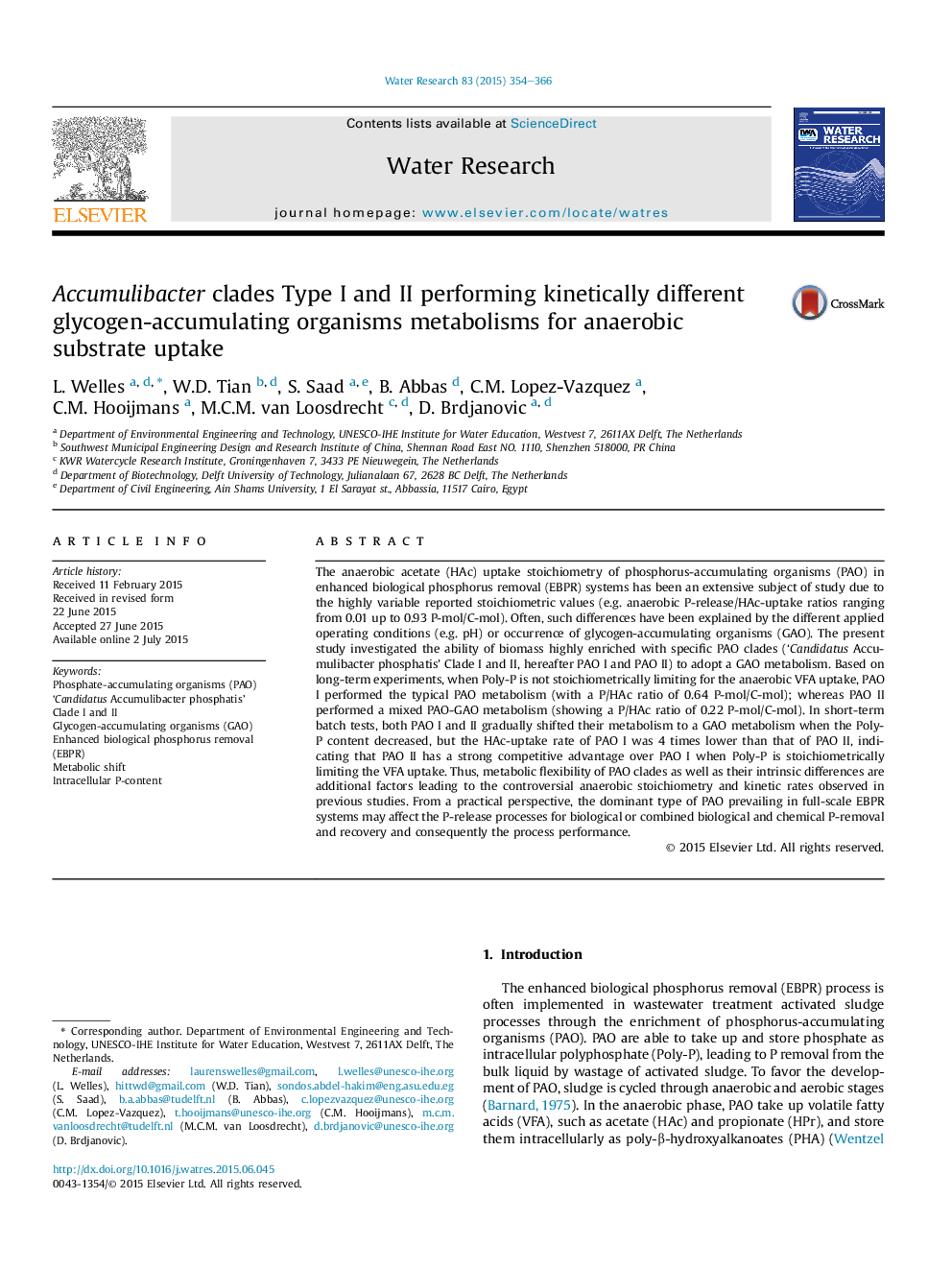| کد مقاله | کد نشریه | سال انتشار | مقاله انگلیسی | نسخه تمام متن |
|---|---|---|---|---|
| 6365795 | 1623085 | 2015 | 13 صفحه PDF | دانلود رایگان |

- The anaerobic stoichiometry of PAO I and II is intrinsically different.
- Both PAO I and II exhibit a GAO metabolism for HAc-uptake under Poly-P depletion.
- At high Poly-P content PAO I has faster HAc-uptake rates than PAO II.
- PAO II has faster HAc-uptake rates than PAO I at low Poly-P content.
- Prevalence of specific PAO clades may influence process performance.
The anaerobic acetate (HAc) uptake stoichiometry of phosphorus-accumulating organisms (PAO) in enhanced biological phosphorus removal (EBPR) systems has been an extensive subject of study due to the highly variable reported stoichiometric values (e.g. anaerobic P-release/HAc-uptake ratios ranging from 0.01 up to 0.93Â P-mol/C-mol). Often, such differences have been explained by the different applied operating conditions (e.g. pH) or occurrence of glycogen-accumulating organisms (GAO). The present study investigated the ability of biomass highly enriched with specific PAO clades ('Candidatus Accumulibacter phosphatis' Clade I and II, hereafter PAO I and PAO II) to adopt a GAO metabolism. Based on long-term experiments, when Poly-P is not stoichiometrically limiting for the anaerobic VFA uptake, PAO I performed the typical PAO metabolism (with a P/HAc ratio of 0.64Â P-mol/C-mol); whereas PAO II performed a mixed PAO-GAO metabolism (showing a P/HAc ratio of 0.22Â P-mol/C-mol). In short-term batch tests, both PAO I and II gradually shifted their metabolism to a GAO metabolism when the Poly-P content decreased, but the HAc-uptake rate of PAO I was 4 times lower than that of PAO II, indicating that PAO II has a strong competitive advantage over PAO I when Poly-P is stoichiometrically limiting the VFA uptake. Thus, metabolic flexibility of PAO clades as well as their intrinsic differences are additional factors leading to the controversial anaerobic stoichiometry and kinetic rates observed in previous studies. From a practical perspective, the dominant type of PAO prevailing in full-scale EBPR systems may affect the P-release processes for biological or combined biological and chemical P-removal and recovery and consequently the process performance.
Journal: Water Research - Volume 83, 15 October 2015, Pages 354-366